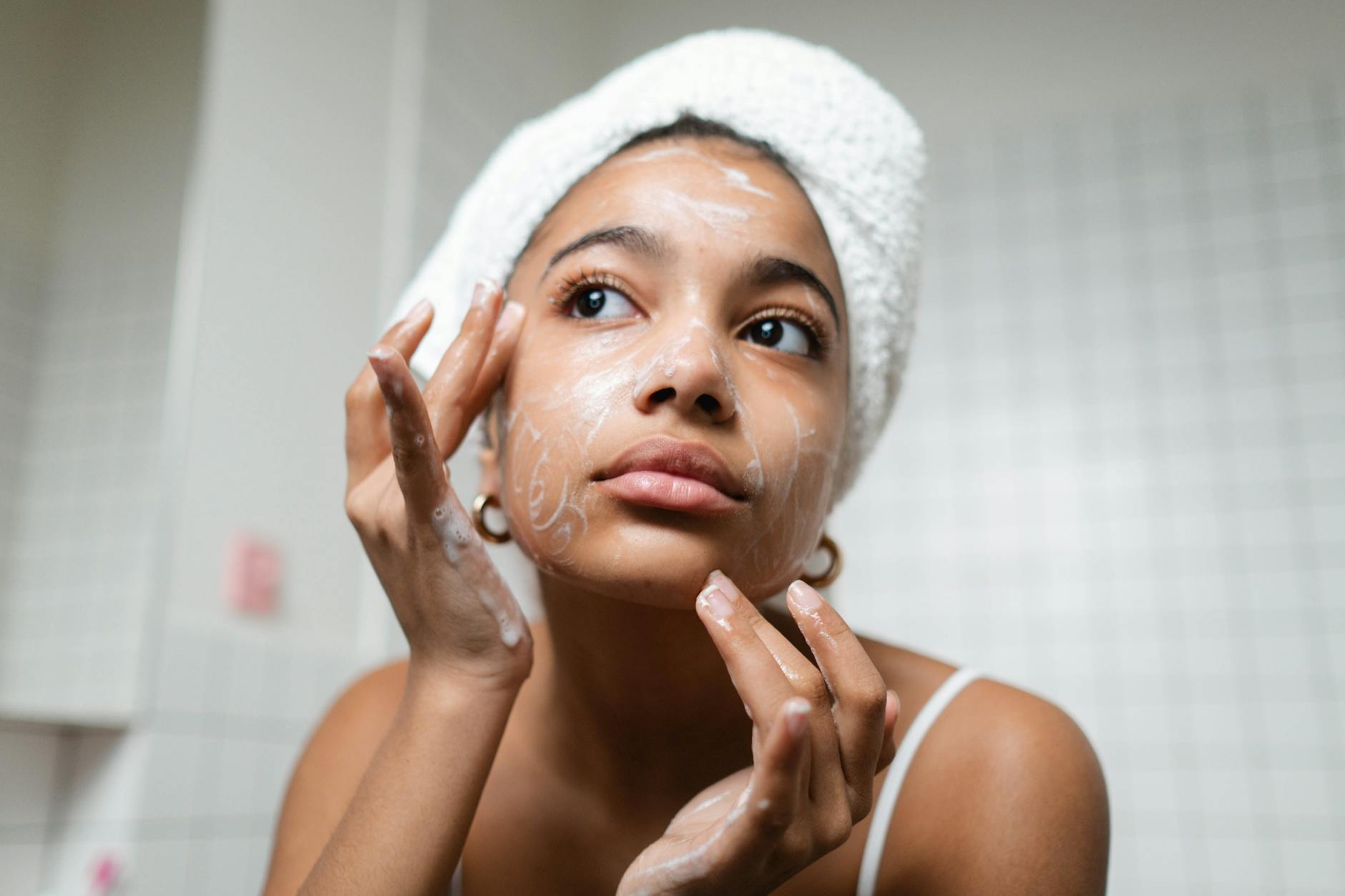Sun Damage Repair: Your Guide to Younger-Looking Skin
Have you noticed those stubborn dark spots, wrinkles, or uneven skin tone that weren't there before? You're not alone. Sun damage affects millions of people worldwide, leaving lasting marks that go far deeper than just a sunburn.

While prevention is crucial, what about the damage that's already done? The good news is that sun-damaged skin isn't a life sentence. Whether through cutting-edge medical treatments or proven natural remedies, there are effective ways to repair and rejuvenate your skin. From professional treatments to simple adjustments in your daily skincare routine, we'll explore the complete spectrum of solutions that can help restore your skin's natural radiance and health. Let's dive into the essential steps you can take to reverse sun damage and protect your skin for the future.
Understanding Sun Damage

Types of UV Rays and Their Effects
The sun emits three types of ultraviolet (UV) rays that affect your skin differently:
- UVA rays: Penetrate deeply, causing premature aging and wrinkles
- UVB rays: Primarily responsible for sunburns and skin reddening
- UVC rays: Mostly blocked by the ozone layer but can be present in artificial sources
Common Signs of Sun-Damaged Skin
- Sun damage manifests in various ways, including:
- Fine lines and wrinkles, especially around the eyes and mouth
- Dark spots, freckles, and uneven pigmentation
- Rough, leathery skin texture
- Broken capillaries or spider veins
- Loss of skin elasticity
- Dry, scaly patches
High-Risk Factors and Prevention
Several factors increase your susceptibility to sun damage:
- Fair skin or light-colored eyes
- Living in high-altitude or equatorial regions
- Regular outdoor activities between 10 AM and 4 PM
- Certain medications that increase photosensitivity
Essential prevention strategies include:
- Applying broad-spectrum sunscreen (SPF 30+) daily
- Wearing protective clothing and wide-brimmed hats
- Seeking shade during peak UV hours
- Using UV-protective sunglasses
- Regular skin examinations for changes
Now that we understand how sun damage occurs and its effects on our skin, let's explore the various medical treatments available to address these concerns.

Medical Treatments
Chemical Peels and Their Benefits
Chemical peels offer targeted treatment for sun-damaged skin by removing damaged outer layers. These treatments use controlled chemical solutions to:
- Reduce dark spots and hyperpigmentation
- Improve skin texture and tone
- Stimulate collagen production
- Minimize fine lines and wrinkles
Laser Therapy Options
Advanced laser treatments provide precise correction for various sun damage concerns through:
- Fractional laser therapy for deep tissue repair
- IPL (Intense Pulsed Light) for surface-level damage
- CO2 lasers for severe sun damage treatment
Prescription Medications
Dermatologist-prescribed medications effectively address sun damage:
- Retinoids to increase cell turnover
- Hydroquinone for melanin reduction
- Topical steroids for inflammation
- Vitamin C serums for antioxidant protection
Professional Microdermabrasion
This non-invasive treatment offers gentle yet effective results by:
- Exfoliating damaged skin cells
- Improving circulation
- Stimulating new cell growth
- Evening out skin tone and texture
These medical treatments often work best when combined in a customized treatment plan. The choice of treatment depends on factors like damage severity, skin type, and desired recovery time. Most patients require multiple sessions for optimal results, with maintenance treatments recommended for long-term benefits. Now let's explore some natural remedies that can complement these medical treatments for enhanced results.

Natural Remedies
Vitamin-rich Face Masks
DIY vitamin-rich face masks can significantly help repair sun-damaged skin. Create these nourishing masks using:
- Mashed papaya with honey (rich in vitamins A and C)
- Greek yogurt with turmeric (contains zinc and probiotics)
- Avocado and cucumber blend (packed with vitamin E)
- Apply these masks 2-3 times weekly for 15-20 minutes to promote skin healing.
Antioxidant Serums
Antioxidant serums play a crucial role in reversing sun damage by:
- Neutralizing free radicals
- Reducing inflammation
- Supporting collagen production
- Look for serums containing vitamin C, green tea extract, or niacinamide. Apply them after cleansing and before moisturizing for maximum benefits.
Aloe Vera Treatments
Aloe vera is nature's sunburn healer, offering multiple benefits:
- Immediate cooling and soothing effect
- Natural anti-inflammatory properties
- Enhanced skin cell regeneration
- Use pure aloe vera gel directly from the plant or choose products with high aloe vera concentration. Apply twice daily on affected areas.
For optimal results, combine these remedies with gentle skincare practices. Fresh aloe vera gel can be mixed with vitamin E oil for enhanced healing properties. Remember to patch test any new natural remedy before full application to avoid sensitivity reactions. These natural solutions work best when integrated into a consistent skincare routine, which we'll explore in the next section.

Skincare Routine Adjustments
Best Ingredients for Repair
When repairing sun-damaged skin, focus on these powerhouse ingredients:
- Vitamin C: Brightens dark spots and boosts collagen production
- Retinoids: Accelerate cell turnover and reduce fine lines
- Niacinamide: Reduces inflammation and evens skin tone
- Peptides: Support skin repair and strengthen barrier function
Daily Protection Measures
Incorporate these essential steps into your morning routine:
- Apply broad-spectrum SPF 30+ sunscreen daily
- Reapply every 2 hours when outdoors
- Wear protective clothing and wide-brimmed hats
- Seek shade during peak UV hours (10 AM - 4 PM)
Night Repair Products
Your evening routine should include:
- Gentle cleanser to remove sunscreen and debris
- Treatment serums with repair ingredients
- Rich moisturizer to lock in active ingredients
- Eye cream with peptides for delicate areas
Hydration Strategies
Maintain skin hydration through multiple approaches:
- Use hyaluronic acid serums on damp skin
- Layer lightweight, hydrating products
- Include ceramides to strengthen moisture barrier
- Incorporate facial oils for extra nourishment
Your skin needs time to recover from sun damage, so consistency with these adjustments is key. Making these changes to your skincare routine creates a strong foundation for skin repair and future protection. Let's explore how to maintain these improvements for long-term recovery.
Long-term Recovery
Timeline for Visible Results
When treating sun damage, patience is essential as results vary based on damage severity and treatment type. Most people notice initial improvements within:
- 4-6 weeks for superficial treatments
- 2-3 months for deeper treatments
- 6-12 months for complete skin renewal
Maintenance Practices
To maintain your skin's health after sun damage repair, incorporate these essential practices:
- Monthly skin assessments to track progress
- Regular exfoliation (1-2 times weekly)
- Daily use of antioxidant serums
- Consistent moisturizing routine
- Quarterly professional treatments
Preventing Future Damage
Protection is crucial for maintaining your restored skin health:
- Apply broad-spectrum SPF 30+ sunscreen daily
- Reapply sunscreen every 2 hours when outdoors
- Wear protective clothing and wide-brimmed hats
- Seek shade between 10 AM and 4 PM
- Use UV-protective sunglasses
The key to successful sun damage recovery lies in consistency. While initial treatments address existing damage, maintaining results requires ongoing care and protection. Most patients achieve optimal results when combining professional treatments with proper home care routines. By following these guidelines and maintaining protective measures, you can preserve your skin's health and prevent future sun-related concerns. Now that you understand long-term recovery, you're equipped to maintain healthy, protected skin for years to come.

Conclusion
Repairing sun-damaged skin requires a comprehensive approach that combines professional treatments, natural remedies, and consistent skincare habits. From medical interventions like chemical peels and laser therapy to natural solutions such as aloe vera and green tea extracts, there are numerous effective ways to restore your skin's health and appearance.
The journey to healing sun damage is ongoing, and prevention remains the best strategy. Make sun protection a daily priority, maintain a nourishing skincare routine, and consider regular dermatologist visits to monitor your skin's progress. With patience and dedication to proper skin care, you can achieve healthier, more resilient skin that maintains its natural beauty for years to come.